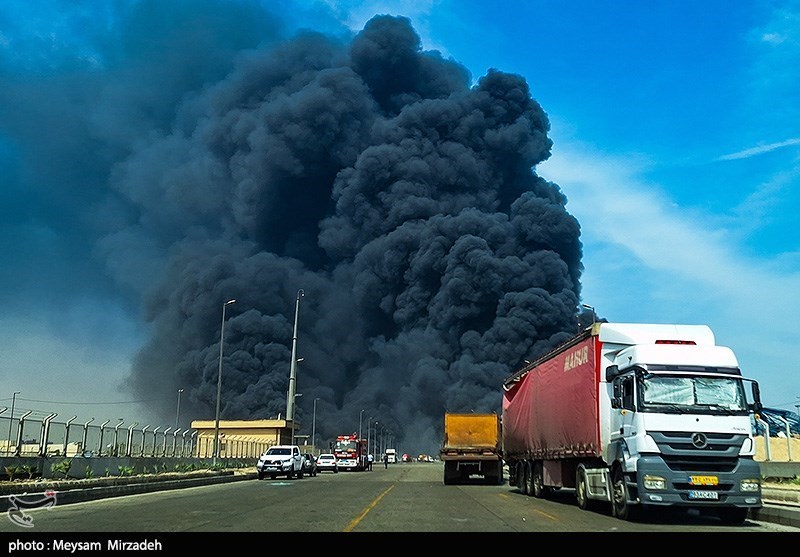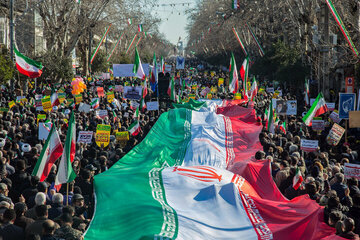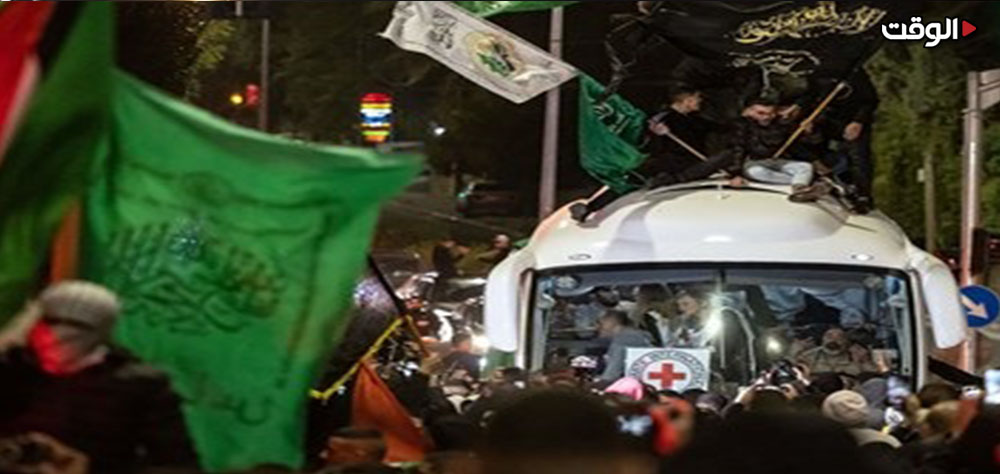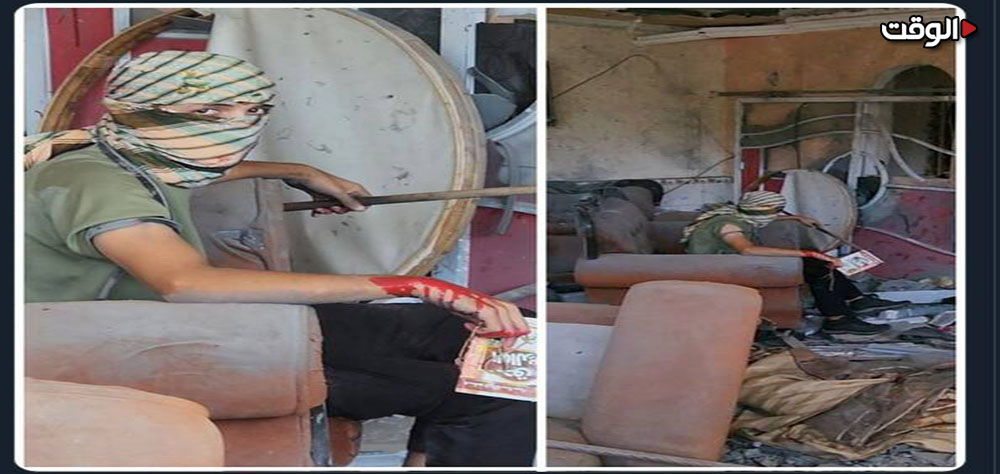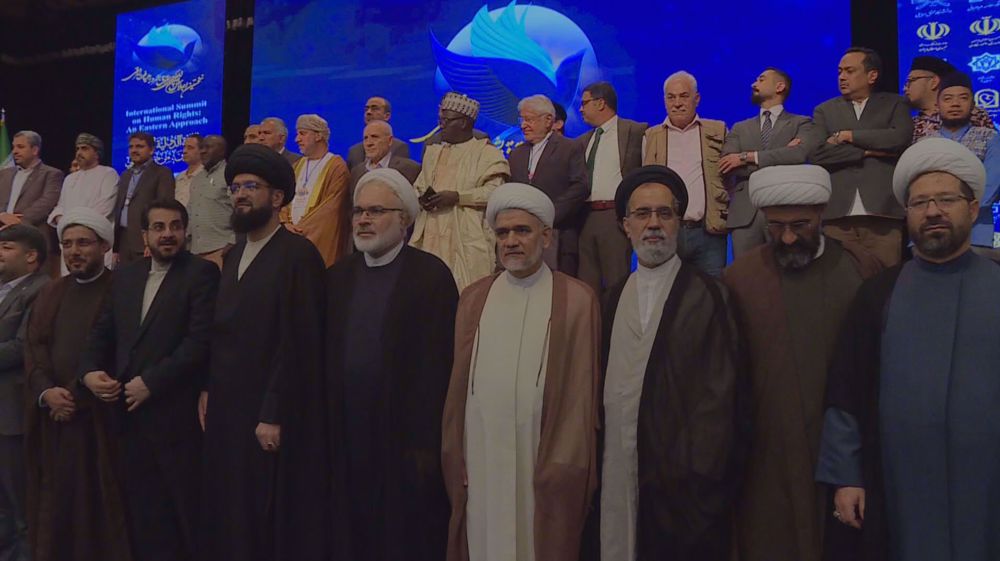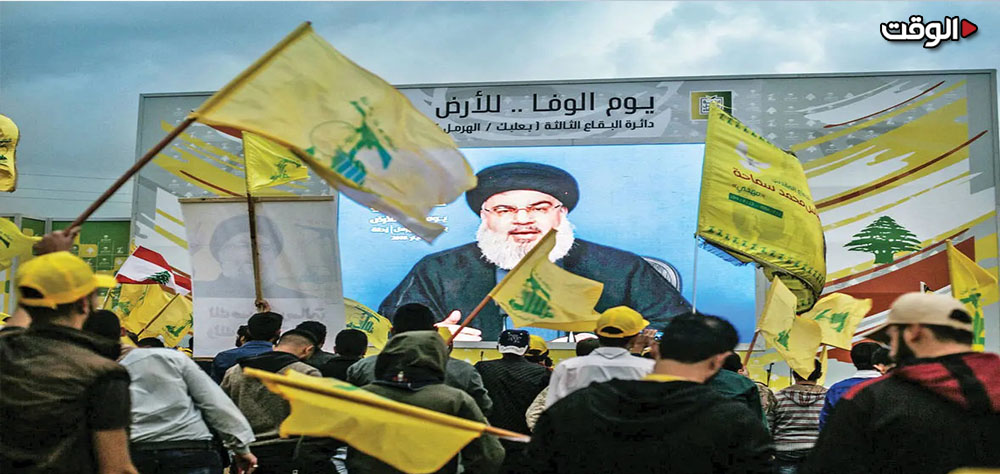- Iran’s Firm Stance in Nuclear Talks Disallows Another Libya Scenario
- Vulnerable Security: Huge Saudi Military Deals only Sink Riyadh Deeper in Reliance on West
- Iran and Belarus Explore Strengthening Military Cooperation
- EU to Review Ties with Israel Amid Ongoing Gaza Conflict and Humanitarian Crisis
- Over 30 Lives Lost in Overnight Israeli Bombardment of Gaza
- China Slams US AI Chip Limits, Threatens Retaliation
- FM Araghchi: Iran’s Uranium Enrichment Is Non-Negotiable
- Haifa Port Blockade, Yemen’s Blow to Major Israeli Trade Artery
- Biblical Military Namings in Gaza War and Their Hidden Aims
- Is Trump Mulling Shift in Gaza Strategy?
Editor's Choice

Is Trump Mulling Shift in Gaza Strategy? Trump may temporarily offer initiatives to ease public pressure, but he cannot persuade Netanyahu to end his Gaza war.
India-Pakistan War Showcased China’s Arms Power against West Recent war has unveiled Western weapons weakness amid thriving Chinese military technologies.
Hunger for Petrodollars: What to Expect from Trump’s Persian Gulf Tour? The US president is expected to make a set of economic and security deals with Arab countries.
Failed Mission: Tel Aviv Running into Impasse on Yemen Israel attacked Yemen several times, but to its frustration, Yemeni missiles keep being fired into occupied territories.
Israel and HTS: Two Blades of the Same Sword Tearing Apart Syria As the HTS cracks down on the minorities like Druze, Israel finds the opportunity ripe for intervention and evil scenarios in Syria.
News
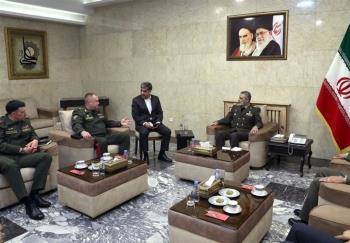
Iran and Belarus Explore Strengthening Military Cooperation
Senior commanders convened in Tehran to discuss advancing military cooperation between Iran and BelarusEU to Review Ties with Israel Amid Ongoing Gaza Conflict and Humanitarian Crisis The European Union has formally started reassessing its political and economic ties with Israel due to the ongoing conflict in Gaza
Over 30 Lives Lost in Overnight Israeli Bombardment of Gaza Israel escalates airstrikes on the Gaza Strip, killing more than 30 people, with heavy attacks concentrated on Khan Younis and Rafah in the south
China Slams US AI Chip Limits, Threatens Retaliation China denounced new US warnings over AI chip use as "bullying" and pledged strong countermeasures to defend its tech industry
FM Araghchi: Iran’s Uranium Enrichment Is Non-Negotiable Iran refuses to negotiate its uranium enrichment in indirect US talks and insists this right is non-negotiable, said FM Abbas Araghchi
Leader Participates in President Raeisi’s Commemoration Ceremony Ayatollah Seyyed Ali Khamenei, Leader of the Islamic Revolution, attended a ceremony commemorating the late Iranian President Ebrahim Raeisi
Iran and Turkmenistan to Finalize Third Power Transmission Line Iran and Tajikistan have agreed to expedite the completion of the third electricity transmission line between Mashhad and Mary
Yemeni Armed Forces Declare Naval Blockade on Israel’s Haifa Port Yemen’s armed forces have announced the initiation of a naval blockade on Haifa Port in occupied Palestine
More Saudi Flights to Iran as First Plane Touches Down in Tehran Amid Warming Ties A Saudi aviation official has announced that more Saudi airlines will soon launch flights to Tehran’s Imam Khomeini International Airport
Netanyahu: Israel Will ‘Control All of Gaza’ as Ground Offensive Expands Israeli Prime Minister Benjamin Netanyahu has declared that his government intends to "take control of all" of the Gaza Strip
Iran Condemns US Inconsistency, Dismisses Witkoff’s Call for Zero Enrichment The spokesperson for Iran’s Foreign Ministry likened the US’s inconsistent stance in nuclear negotiations to a snakes and ladders game
Tehran Criticizes Arab League’s ‘Unacceptable’ Remarks on Three Persian Gulf Islands Iran’s Foreign Ministry spokesperson rejected the Arab League’s recent statement on the Persian Gulf islands of Abu Musa, Greater Tunb, and Lesser Tunb
Strengthening Economic Ties Promotes Peace and Stability in The Region Promoting economic cooperation contributes to regional security and stability, says the Iranian Parliament Speaker
Pezeshkian Says Deal Achievable if US Ceases Intimidation Tactics President Masoud Pezeshkian of Iran believes an agreement with the US is within reach
Intense Fighting Resumes Between SDF and Syrian Army in Aleppo Syrian army troops engaged in clashes with Kurdish SDF units near the Tishreen Dam in Aleppo governorate
Iran Neither Pursues nor Supports the Development of Nuclear Weapons Iranian President Masoud Pezeshkian affirmed Iran’s right to utilize peaceful nuclear technology for essential industries
Yemeni Missile Sets Off Sirens in Tel Aviv, Forces Closure of Ben Gurion Airport A missile fired from Yemen triggered air raid sirens in Tel Aviv, al-Quds, and other areas of occupied Palestine on Sunday
Hamas Rejects Abbas’s Call to Disarm Under Israeli Occupation Hamas, the ruling resistance group in Gaza, has dismissed Palestinian Authority President Mahmoud Abbas’s call to disarm
Brother and nephews of late Hamas leader Yahya Sinwar killed in Israeli airstrike on Gaza A brother of the late Hamas leader Yahya Sinwar was reportedly killed in an Israeli airstrike targeting central Gaza
Five Palestinian Journalists Among the Latest Victims of Israeli Airstrikes in Gaza Five additional Palestinian journalists have been killed in separate Israeli airstrikes across the Gaza Strip
Most Viewed
Iran’s Firm Stance in Nuclear Talks Disallows Another Libya Scenario
Three Hidden Motives for Bin Salman to Mediate Syria Sanctions Relief
Tehran Dialogue Forum: Promoting Iran as Hub of Anti-imperialist Diplomacy
Arab Summit, Baghdad’s Opportunity to Establish Regional Role
Bagram Base: US’s Strategic Watch Post Helping Contain Taliban, Asian Rivals
Iran Neither Pursues nor Supports the Development of Nuclear Weapons
Hamas Rejects Abbas’s Call to Disarm Under Israeli Occupation
Yemeni Missile Sets Off Sirens in Tel Aviv, Forces Closure of Ben Gurion Airport
Iran and Arab Monarchies in Trump’s Eyes: What’s the True Development?
More Saudi Flights to Iran as First Plane Touches Down in Tehran Amid Warming Ties
Pezeshkian Says Deal Achievable if US Ceases Intimidation Tactics
Intense Fighting Resumes Between SDF and Syrian Army in Aleppo
Brother and nephews of late Hamas leader Yahya Sinwar killed in Israeli airstrike on Gaza
Iran Condemns US Inconsistency, Dismisses Witkoff’s Call for Zero Enrichment
Hell on Earth: Gaza Suffering amid Sham Aid Promises
Haifa Port Blockade, Yemen’s Blow to Major Israeli Trade Artery
New Syria and the Project to Remove Palestinian Resistance Factions from Damascus
Iran and Azerbaijan: Neighbors with High Partnership Potentials
Gaza Media Office Accuses Israel of Deliberately Targeting Women and Children
Araghchi: Iran and US Negotiations Concentrated on Nuclear Matters
Iran-Africa Forum: Golden Opportunity for Higher-Level Trade
Hamas: Only Full Deal with War-ending Guarantees Acceptable
Iran Criticizes US Airstrike on Migrant Detention Facility in Yemen
What’s Meaning of Iranian FM’s China Visit amid Talks with the US?
UNRWA Reveals Disturbing Abuse of Gaza Aid Workers in Israeli Custody
Iran And the US Wrap Up Their Third Round of Discussions in Oman
Ayatollah Khamenei Demands Full Investigation into Iran Port Explosion
Israel and HTS: Two Blades of the Same Sword Tearing Apart Syria
IRGC Navy Unveils Missile Boat with Speed of 116 Knots
Hunger for Petrodollars: What to Expect from Trump’s Persian Gulf Tour?
Failed Mission: Tel Aviv Running into Impasse on Yemen
In Focus
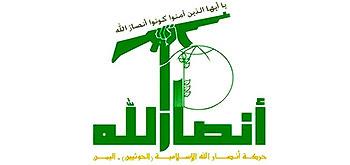
Ansarullah
A Zaidi Shiite movement operating in Yemen. It seeks to establish a democratic government in Yemen.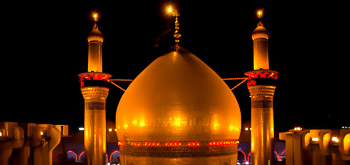
Shiite
represents the second largest denomination of Islam. Shiites believe Ali (peace be upon him) to be prophet"s successor in the Caliphate.
Resistance
Axis of Resistances refers to countries and movements with common political goal, i.e., resisting against Zionist regime, America and other western powers. Iran, Syria, Hezbollah in Lebanon, and Hamas in Palestine are considered as the Axis of Resistance.
Persian Gulf Cooperation Council
A regional political u n i o n consisting of Arab states of the Persian Gulf, except for Iraq.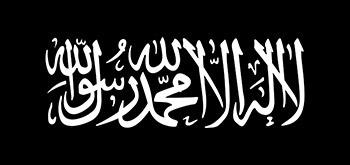
Taliban
Taliban is a Sunni fundamentalist movement in Afghanistan. It was founded by Mohammed Omar in 1994.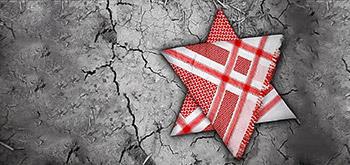
Wahhabism & Extremism
Wahhabism is an extremist pseudo-Sunni movement, which labels non-Wahhabi Muslims as apostates thus paving the way for their bloodshed.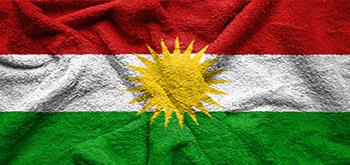
Kurds
Kurds are an ethnic group in the Middle East, mostly inhabiting a region, which spans adjacent parts of Iran, Iraq, Syria, and Turkey. They are an Iranian people and speak the Kurdish languages, which form a subgroup of the Northwestern Iranian branch of Iranian languages.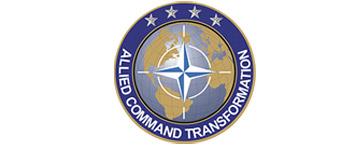
NATO
The North Atlantic Treaty Organization is an intergovernmental military alliance based on the North Atlantic Treaty which was signed on 4 April 1949.
Islamic Awakening
Refers to a revival of the Islam throughout the world, that began in 1979 by Iranian Revolution that established an Islamic republic.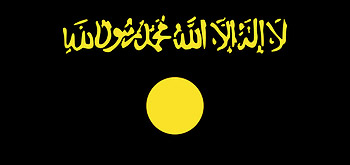
Al-Qaeda
A militant Sunni organization founded by Osama bin Laden at some point between 1988 and 1989
New node
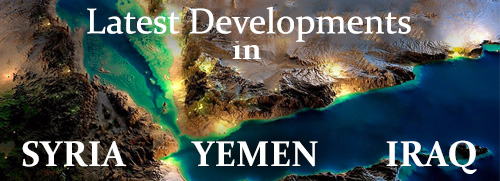

Report
Larijani’s Special Mission in Damascus and Beirut
Sunday 17 November 2024
2006 said that Sayyed Hassan Nasrallah and Hezbollah fighters had special attention to the messages of the Leader.
Later, Nasrallah confirmed these words of the top Iranian general, saying: We were very happy that the Leader of the Islamic Revolution spoke with confidence of our victory, whil ...
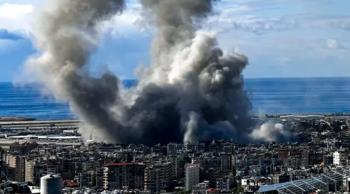
News
Israeli Airstrikes Claim Over 30 Lives in Lebanon’s Capital Amid Ongoing Violence
Tuesday 26 November 2024
،
2006 conflict between Hezbollah and Israel, includes a 60-day transition plan. During this period, the Israeli military would withdraw from southern Lebanon, the Lebanese army would deploy near the border, and Hezbollah fighters would relocate north of the Litani River.

Report
Lebanon Ceasefire on the Brink as Israeli Violations Continue
Saturday 30 November 2024
،
2006 war, while ignoring evidence of their recent installation, a position criticized by the Lebanese side as unacceptable bias.
Hezbollah's hand open for reaction
The Israeli violations not only do not bring calm to the border, but also they could prompt rejuvenated clashes between the ...

Report
Who’s Al-Jolani and What’s His Role in Syria Future?
Sunday 8 December 2024
،
2006 and held for five years. He later took on the task of establishing Al-Qaeda's Syrian branch, the Al-Nusra Front, and increased its influence in areas controlled by the terrorists, especially Idlib.
During the Syrian crisis last decade, al-Jolani worked closely with Abu Bakr al-Baghdadi, th ...

Analysis
A Comparison of First and Third Lebanon Wars: Understanding Hezbollah’s Recent Victory over Israel
Wednesday 18 December 2024
،
2006) wars in terms of the strategic perspective determined by the enemy, and in all three cases, the Israeli positions are about eliminating and crushing the resistance and pushing the resistance forces back to the north of the Litani River and ensuring the security of the northern settlers.
Howev ...
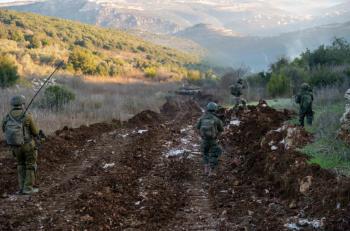
News
UN Calls on Israel to Immediately Withdraw from Lebanese Territory
Sunday 19 January 2025
،
2006 ceasefire, and called for Israel’s immediate withdrawal, as outlined in the 60-day truce agreement.
The ceasefire, effective since November 27, followed Israel’s failure to achieve its objectives during nearly 14 months of conflict with Hezbollah, incurring significant losses. The ...
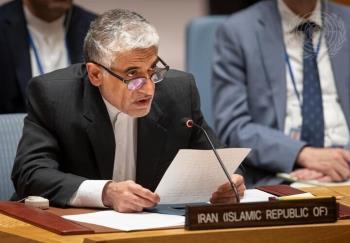
News
UN Envoy Responds to Israel’s Baseless Accusations Against Iran
Sunday 26 January 2025
،
2006) and its refusal to comply with ceasefire obligations, including the withdrawal from southern Lebanon.
Iravani urged the UN Security Council to take decisive action to compel Israel to adhere to its obligations under international law, cease violations of Lebanese sovereignty, and immediately ...
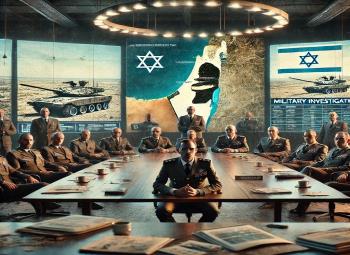
Analysis
Is a Second Winograd Commission On the Way for Israel Gaza War Defeat ?
Sunday 26 January 2025
،
2006. One of the most important results of the 33-day war was the formation of the Winograd Commission to identify the factors that led to the defeat in the war. This commission had a profound impact on Israel’s domestic and military policies. Now, in light of the recent Gaza war, the question ...

Paper
Islamic Revolution: Inspiring Resistance from the Mediterranean to Bab-el-Mandeb
Saturday 8 February 2025
،
2006, Hezbollah stopped the advance of the Israeli army using modern weapons and tactics. Hezbollah now has an arsenal of short and medium-range missiles, and drones, which are capable of striking deep into Israel.
Another Islamic land where the seed of resistance discourse was planted with the vic ...

Interview
Sayyed Nasrallah Funeral a Sign of Power Solidity, Hezbollah Popular Globally: Mesbahi Moghadan
Monday 24 February 2025
،
2006 . In that war, Hezbollah siezed two spies and took intelligence from them about the Israeli plans to invade southern Lebanon. So, Hezbollah acted preemptively and the war began, but at the end of the road, Israel had to accept the ceasefire and retreat from southern Lebanon. It must be said tha ...


